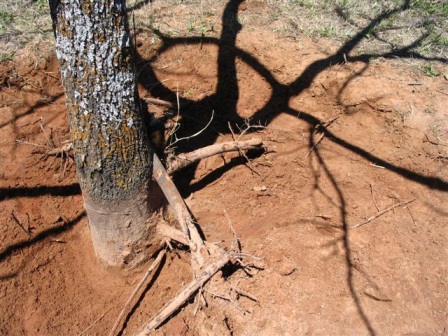There are what look like new roots, which is encouraging.
The compacted soil could be part of the problem, but Junipers seem to do alright in dry sandy soils.
What I can't see in the pictures is the root flare. If you look at a tree in the forest, it has a natural widening at the base where the roots come off the trunk and grow out horizontally. At this point, is where the soil level should be.
When the trunk is buried, it will often grow adventitious roots. If left buried too deep, the tree dies, or possibly these new adventitious roots become the new root flare and the roots below die off.
Correcting planting depth is tricky. If you can dish out the soil, that's easiest. You need to find the flare. Any small roots above the new soil line can be cut off, unless they have gotten big, then removing them can kill the tree.
The main reason to find the flare is to see if there are any girdling roots and preventing new root from becoming girdling roots. If the soil is off the trunk, roots can't grow around it. Roots don't grow up into the air. You also want to make sure all the planting material (twine and synthetic burlap) was removed.
A tree trunk grows in diameter. If it can't, it dies. That's why all trees have a root flare, to change the angle of the wood from vertical to horizontal. To grow in diameter it only needs to push soil up. If the wood is vertical in the soil, it can't easily grow. In compacted soil, it is even harder to grow.
If dishing the soil out won't work, it may need to be replanted. Completely dig out the tree and set it at the proper level. But I don't envy you having to dig in that tight little hole and compacted soil.





